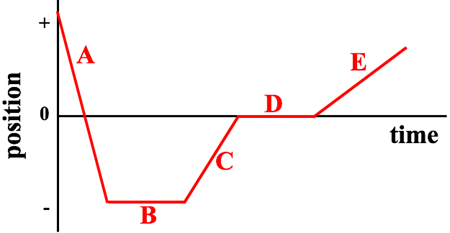There are four very similar versions of this question. Each version provides a position-time graph of a five-stage motion and asks the learner to determine the stages in which the object is moving with the greatest or the smallest speed. One of the versions is shown below.
Version 1
Five stages - labeled A, B, C, D, and E - of an object's motion are represented by the position-time graph below. During which stage is the object moving with the greatest speed?
